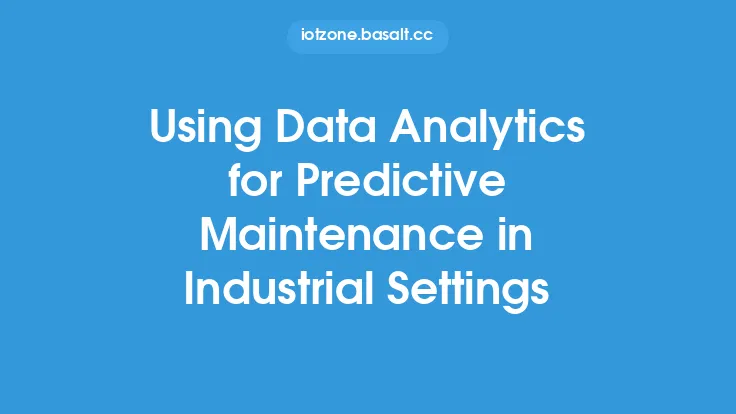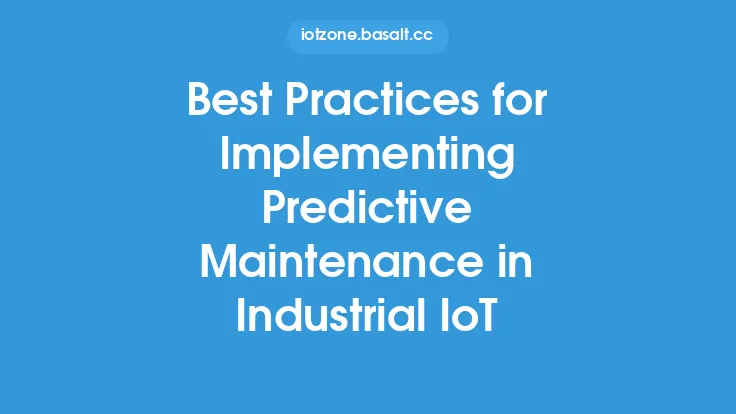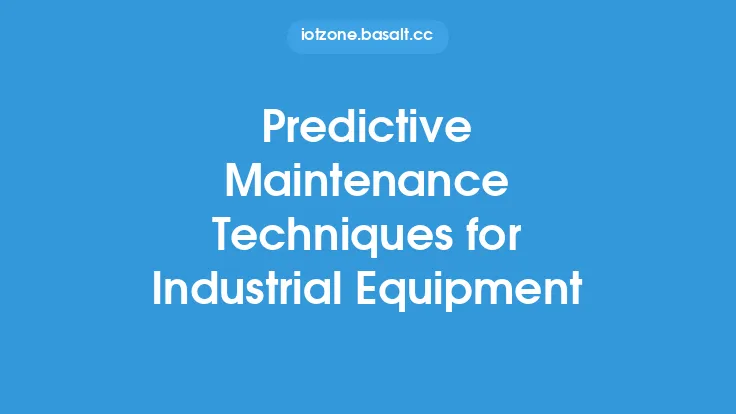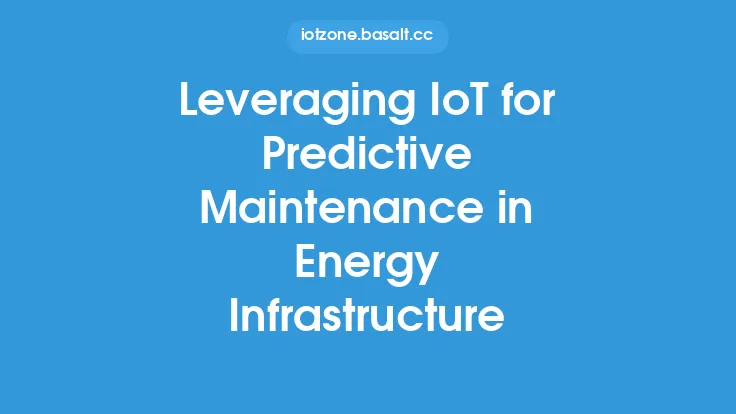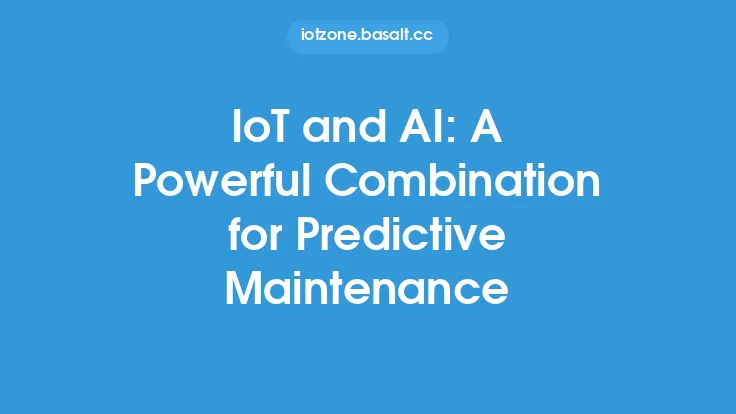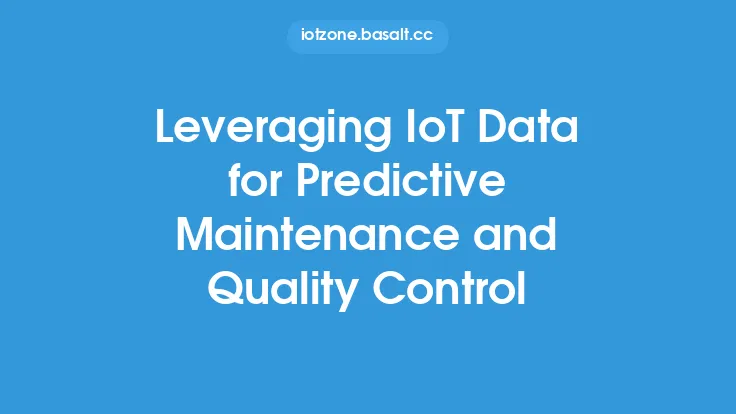The agricultural industry has undergone significant transformations in recent years, driven by the adoption of innovative technologies such as the Internet of Things (IoT). One of the most promising applications of IoT in agriculture is predictive maintenance in agricultural equipment. Predictive maintenance involves using real-time data and analytics to predict when equipment is likely to fail or require maintenance, allowing farmers to take proactive measures to prevent downtime and reduce repair costs.
Introduction to Predictive Maintenance
Predictive maintenance is a proactive approach to equipment maintenance that uses advanced analytics and machine learning algorithms to predict when equipment is likely to fail or require maintenance. This approach is in contrast to traditional reactive maintenance, which involves repairing equipment after it has failed. Predictive maintenance has been widely adopted in various industries, including manufacturing, transportation, and healthcare, and is now being applied in the agricultural sector.
Benefits of Predictive Maintenance in Agricultural Equipment
The benefits of predictive maintenance in agricultural equipment are numerous. Some of the most significant advantages include:
- Reduced downtime: Predictive maintenance helps to minimize equipment downtime, which can have a significant impact on crop yields and farm productivity.
- Lower repair costs: By predicting when equipment is likely to fail, farmers can take proactive measures to prevent costly repairs.
- Improved equipment lifespan: Regular maintenance and repairs can help to extend the lifespan of agricultural equipment, reducing the need for costly replacements.
- Enhanced safety: Predictive maintenance can help to identify potential safety hazards, such as faulty brakes or worn-out parts, reducing the risk of accidents and injuries.
- Increased efficiency: Predictive maintenance can help to optimize equipment performance, reducing fuel consumption and improving overall efficiency.
IoT Technologies Used in Predictive Maintenance
Several IoT technologies are used in predictive maintenance, including:
- Sensors: Sensors are used to collect data on equipment performance, such as temperature, vibration, and pressure.
- GPS: GPS technology is used to track equipment location and movement, helping to identify potential issues related to equipment usage and maintenance.
- Telematics: Telematics involves the use of wireless communication technologies, such as cellular or satellite networks, to transmit data from equipment to the cloud or a central server.
- Cloud computing: Cloud computing provides a platform for data storage, processing, and analysis, enabling farmers to access equipment data and analytics from anywhere.
- Machine learning: Machine learning algorithms are used to analyze equipment data and predict when maintenance is required.
Implementation of Predictive Maintenance in Agricultural Equipment
Implementing predictive maintenance in agricultural equipment requires a structured approach. The following steps are involved:
- Equipment selection: Identify the equipment that is critical to farm operations and would benefit from predictive maintenance.
- Sensor installation: Install sensors on the selected equipment to collect data on performance and usage.
- Data collection: Collect data from the sensors and transmit it to the cloud or a central server.
- Data analysis: Analyze the data using machine learning algorithms to predict when maintenance is required.
- Maintenance scheduling: Schedule maintenance based on the predictions, taking into account factors such as weather, soil conditions, and crop cycles.
Challenges and Limitations
While predictive maintenance offers numerous benefits, there are several challenges and limitations to its adoption in agricultural equipment. Some of the most significant challenges include:
- Data quality: The quality of the data collected from sensors can be affected by factors such as weather, soil conditions, and equipment usage.
- Equipment complexity: Agricultural equipment can be complex, making it challenging to install sensors and collect data.
- Cost: The cost of implementing predictive maintenance can be high, particularly for small-scale farmers.
- Cybersecurity: The use of IoT technologies in predictive maintenance raises concerns about cybersecurity, particularly in relation to data privacy and equipment security.
Best Practices for Implementing Predictive Maintenance
To overcome the challenges and limitations of predictive maintenance, farmers can follow several best practices, including:
- Start small: Begin with a small pilot project to test the effectiveness of predictive maintenance.
- Choose the right equipment: Select equipment that is critical to farm operations and would benefit from predictive maintenance.
- Work with a reputable provider: Partner with a reputable provider of predictive maintenance solutions to ensure that the technology is reliable and effective.
- Monitor and evaluate: Continuously monitor and evaluate the effectiveness of predictive maintenance, making adjustments as needed.
Conclusion
Predictive maintenance is a powerful tool for improving the efficiency and productivity of agricultural equipment. By using IoT technologies such as sensors, GPS, and machine learning algorithms, farmers can predict when equipment is likely to fail or require maintenance, reducing downtime and repair costs. While there are challenges and limitations to the adoption of predictive maintenance, following best practices and working with reputable providers can help to overcome these hurdles. As the agricultural industry continues to evolve, the use of predictive maintenance is likely to become increasingly important, enabling farmers to optimize equipment performance, reduce costs, and improve crop yields.
